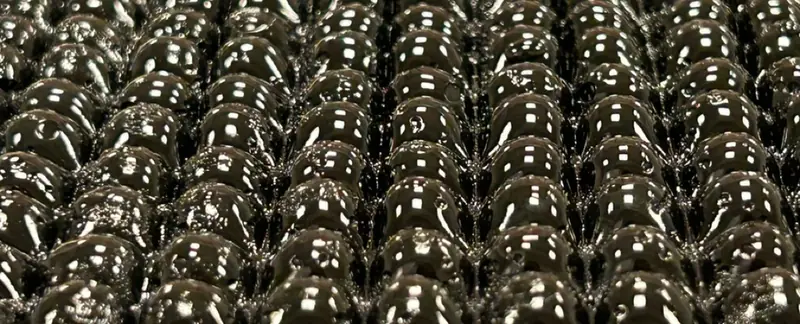
A remarkable black film with bubbles is set to tackle one of the world’s most pressing issues: access to clean drinking water.
As global warming continues, the Earth’s atmosphere is accumulating more and more water. This means we need to find ways to extract it from the air—even in the driest conditions.
A new device for collecting atmospheric water operates without any energy sources. Its inventors tested it in Death Valley, California—one of the driest places on Earth.
In Death Valley, four surrounding mountain ranges push clouds upward, extracting most of their moisture before they reach the parched ground. This makes the area a challenging testing ground for water collection.
However, the hydrogel film, made from polyvinyl alcohol, lithium chloride (a salt that attracts water), glycerin, and black ink, has risen to the challenge.
The team shaped the gel into a bubble-like film to increase the surface area for water collection. Researchers ensured that the microstructure of the material did not have pores large enough to allow the water-attracting salt to escape. Glycerin helped keep the salt contained within the gel.
The gel panel was placed between glass panels with an outer polymer film that aids in cooling. During testing, this passive collector, about the size of a window, extracted over 50 milliliters of clean drinking water per day. At night, when humidity peaked, it collected more than 160 milliliters, according to Science Alert.

Why Is This Discovery Important?
Globally, 4.5 billion people lack reliable access to safe drinking water. If this device can be scaled and made widely available, it could save countless lives.
Until now, atmospheric water collection systems have been characterized by very low production rates (just a few milliliters per day) and high levels of contamination from the materials used in the extraction process.
As mechanical engineer Chang Liu, the lead author of the study, noted, the technology sets “new standards for daily water production and adaptation to climate change.” This system represents a significant step forward “toward practical, scalable, safe, and sustainable water supply solutions for regions facing the greatest water shortages.”
“We are working on the next generation of materials to further enhance its internal properties,” Liu added.
The study’s findings were published in the journal Nature Water.
